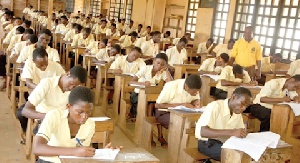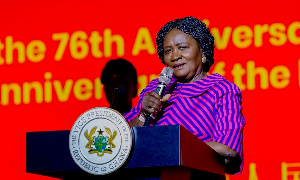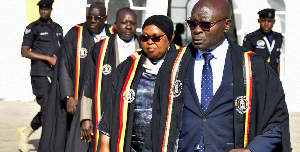Significant progress has been made in terms of primary school enrolment particularly over the past few years due to strategies such as school feeding programme, capitation grant and free school uniforms to improve access to education, according to a United Nations Development Programme (UNDP) report.
The report, which used the Gross Enrolment Ratio (GER) and Net Enrolment ratio (NER) to assess the participation of children in the educational system noted a positive result towards achieving Millennium Development Goal two (MGD 2).
According to the report, NER in primary school at the national level increased from 81 per cent in 2006/07 to 88.5 per cent in 2008/09 and remained at that level in 2009/10.
GER at the national level also reached 95 per cent in 2007/08 and has virtually remained at that level for 3 years to 2010.
The report however noted some regional variations in the achievement of MGD 2.
“Central, Western, Brong-Ahafo, and Upper West regions recorded a GER of more than 100 per cent in 2010 with Greater Accra Region reporting the lowest GER. Central Region recorded the highest NER of 97 per cent while the lowest ratio is reported in Greater Accra with the remaining eight regions recording NER within the range of 81–90 per cent.”
This seems to suggest that only Central region and, to some extent, Western (89.8%) and Brong-Ahafo (88.2%) regions are more likely to attain the NER target of 100 per cent by 2015, the report further noted.
The report also noted that Ghana continues to record increasing primary school completion rate but at a slower rate.
“The rate increased from 85.5 per cent in 2007/08 to 86.3% in 2008/09 and remained at that level in 2009/2010 creating some doubts about the ability of the country to reach the 100 per cent target in 2015.”
Furthermore, the report noted that survival rate at Junior High School worsened drastically following a sharp decline from 75.0 per cent in 2008/09 to 66 per cent in 2009/10.
In terms of regional disparities in the completion rate, Central Region is reported to have achieved full completion rate of 100 per cent overall and for boys in 2010 ahead of time and is 1.1 percentage points away from the target for girls.
Also, three regions—Brong- Ahafo, Northern and Western regions are close to reaching full primary school completion rate for boys at 92.2 per cent, 94.3 per cent and 96.3 per cent respectively, and Upper West Region for girls at 91.3 per cent, the report said.
The report also noted that the Eastern Region recorded the least completion rate for both boys and girls at 80.5 per cent and 77.5 per cent respectively in 2009/10. The Upper East and West regions saw a higher completion rate for girls than boys with the reverse being the case for the other eight regions.
Using the pupil teacher ratio (PTR) as a measure of quality education, the report observed that PTR at the primary level which increased from 34:1 in 2003/04 to about 36:1 in 2005/06, marginally above the 35:1 target has declined to reach 29:1 in 2009/10.
A similar trend, the report noted, is also observed at JHS level with declining PTR from 19.4:1 in 2006 to 13.9:1 in 2010.
This decline at both primary and JHS was also recorded in the three northern regions regarded as deprived regions of the country. This development may be explained by increased number of teachers relative to school enrolment which is expected to have enhancing effect on quality of education at both levels.
On literacy rate, the report said there has been improvement in overall literacy rate among the youth for both males and females since 1991 with better rates for males than females.
In the urban areas, the report said proportion of young males who can read and write in English improved consistently from 18.0 per cent in 1991/92 to 59.9 per cent in 2005/06.
Similarly, it further said about 15.5 per cent of young females were able to read and write in English in 1991/92 and this improved significantly to 47 per cent in 2005/06.
The substantial improvement in the literacy rate among the youth over one-and-half decades the report noted is a reflection of the effort of government to provide education for all Ghanaians.
Regional News of Wednesday, 18 June 2014
Source: Inform Ghana













